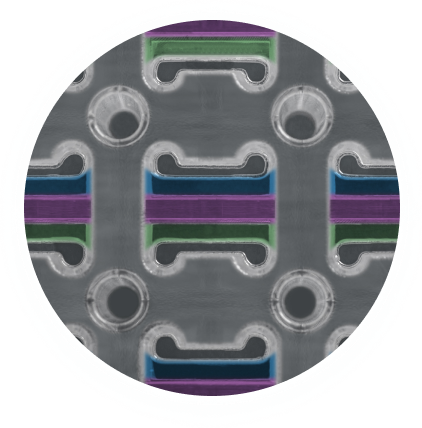Nitinol has become the backbone of many modern implantable devices, particularly in the neurovascular, cardiovascular, and endovascular applications. Its shape memory and superelastic properties make it valuable for use in devices such as stents, flow diverters and vascular scaffolds where flexibility, durability and precise deployment are essential. The development and implementation of Nitinol Implants have significantly advanced these fields, especially with the introduction of advanced surface modifications.
However, while nitinol excels mechanically, its biological performance in blood-contacting environments can present challenges particularly in relation to thrombogenicity, endothelization and ion release. To unlock the full clinical potential of Nitinol Implants, surface modification is often required to enhance their interaction with the body, ensuring better performance in clinical settings.
Smart Reactors’ Camouflage™ coating is engineered to enhance the biocompatibility of nitinol devices. This advanced surface treatment improves the interface between the device and biological environment-reducing platelet adhesion, minimizing nickel ion release and promoting endothelial healing-all without altering the devices mechanical properties.By addressing the biological limitations of nitinol, Camouflage™ enables safer, more effective implant performance, supporting both acute procedural success and long-term vascular integration.
Unveiling the Biological Limitations of Bare Nitinol
Despite its widespread use, bare nitinol surfaces may pose clinical challenges in certain applications:
- Thrombogenic potential: Unmodified nitinol can activate platelets and coagulation pathways upon blood contact, increasing the risk of thrombus formation.
- Delayed endothelialization: Healing over the device surface can be slow, especially in high-shear environments like arteries.
- Ion release: Nickel ions can leach from the alloy over time, raising concerns about hypersensitivity or inflammatory reactions.
Surface modification strategies, such as Smart Reactors’ Camouflage™, are essential to mitigate these limitations and support safe, long-term implant performance.
Camouflage™: Advanced Surface Coating for Blood-Contacting Nitinol Implants
Camouflage™ is a biocompatible, non-drug, hydrophilic surface coating engineered to enhance the performance if blood-contacting nitinol implants. It is designed to resist protein adhesion, reduce thrombus formation, and promote endothelial cell interaction. Unlike drug-eluting coatings, Camouflage™ functions by modifying the surface chemistry to closely mimic native endothelial surfaces—minimizing adverse biological responses without introducing pharmacological agents.
How Camouflage™ Enhances Nitinol-Based Implants
Improved Hemocompatibility
Camouflage™ reduces the interaction between blood proteins and the implant surface, helping to minimize platelet adhesion, thrombin generation, and fibrin formation. These effects are critical for reducing the risk of device-related thrombosis in neurovascular, peripheral, and structural heart applications.
Enhanced Endothelialization
Camouflage™ coating promotes endothelial cell attachment and growth over the implant surface, helping the device to integrate into the vessel wall and reduce long-term risks of restenosis or thrombus formation.
Nickel Ion Barrier
By forming a protective layer on the nitinol surface, Camouflage™ helps minimize nickel ion leaching, reducing local inflammatory responses and enhancing patient safety.
Preservation of Mechanical Integrity
Camouflage™ maintains the superelasticity, flexibility, and shape memory of nitinol. It forms a conformal, ultrathin layer that does not interfere with the device’s expansion or fatigue performance.
Contact us today to see how we can help you with your Implants devices.
Share this post: on LinkedIn

